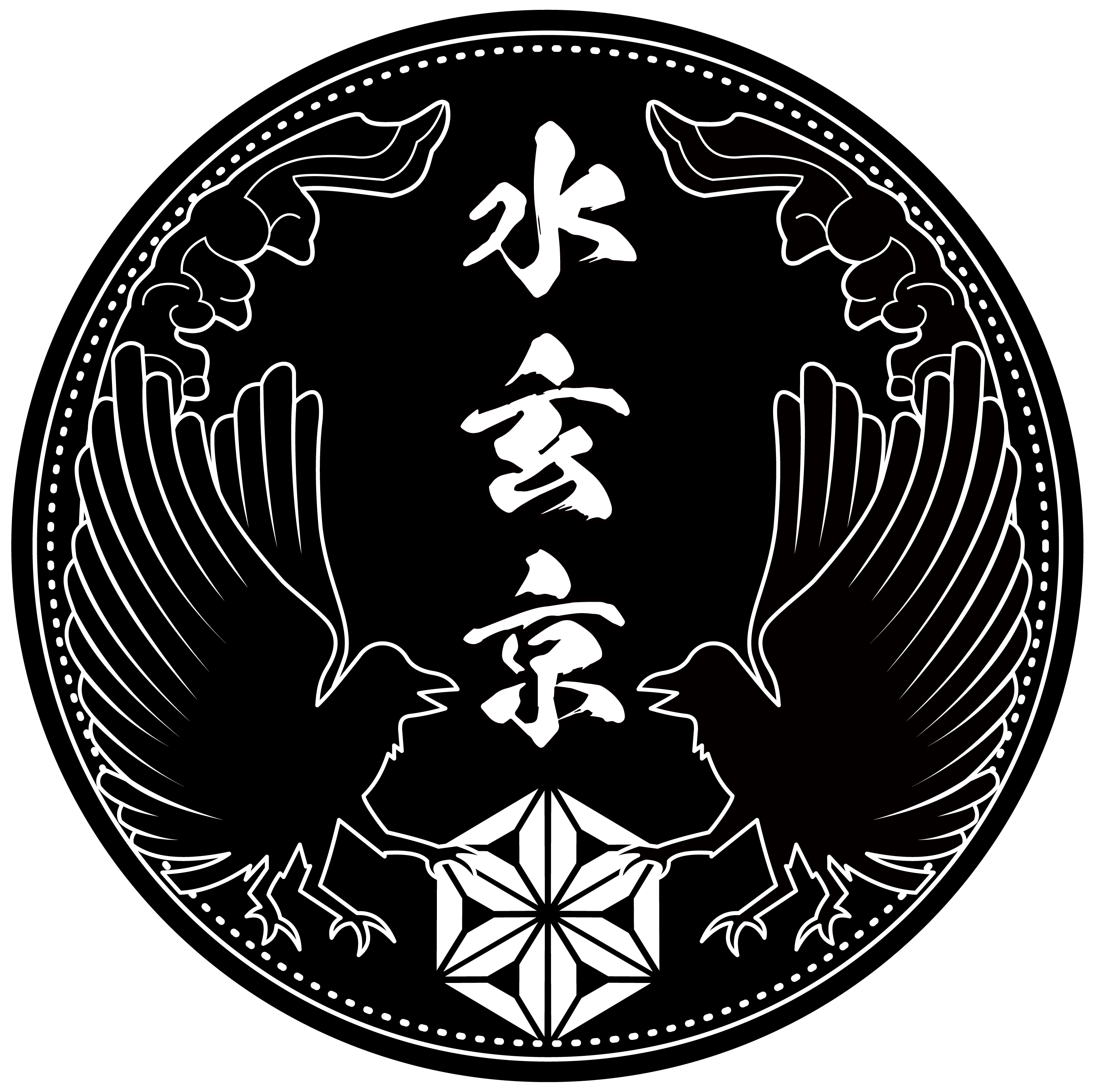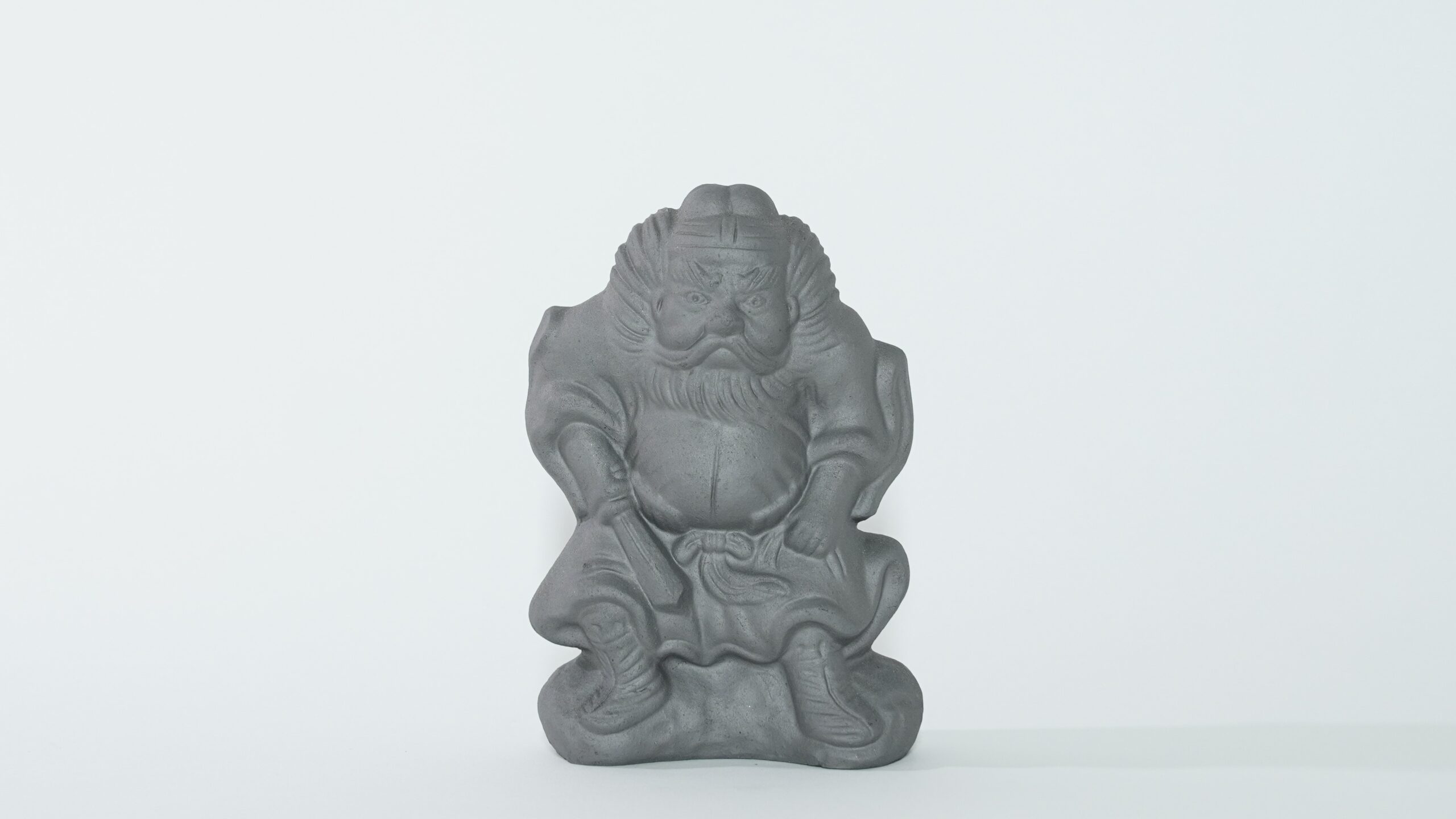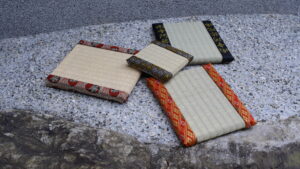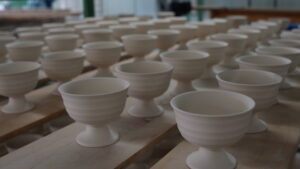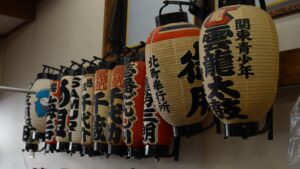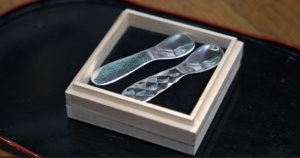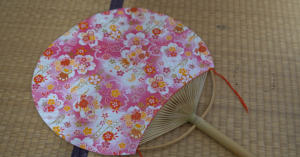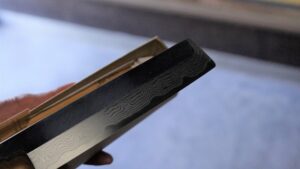Making Process of Kyoto Tile
Molding
The process of designing the shape based on the drawings. This is the process in which the overall shape, or in the case of devil’s tiles, craftsmen design the face of the devil’s tile.
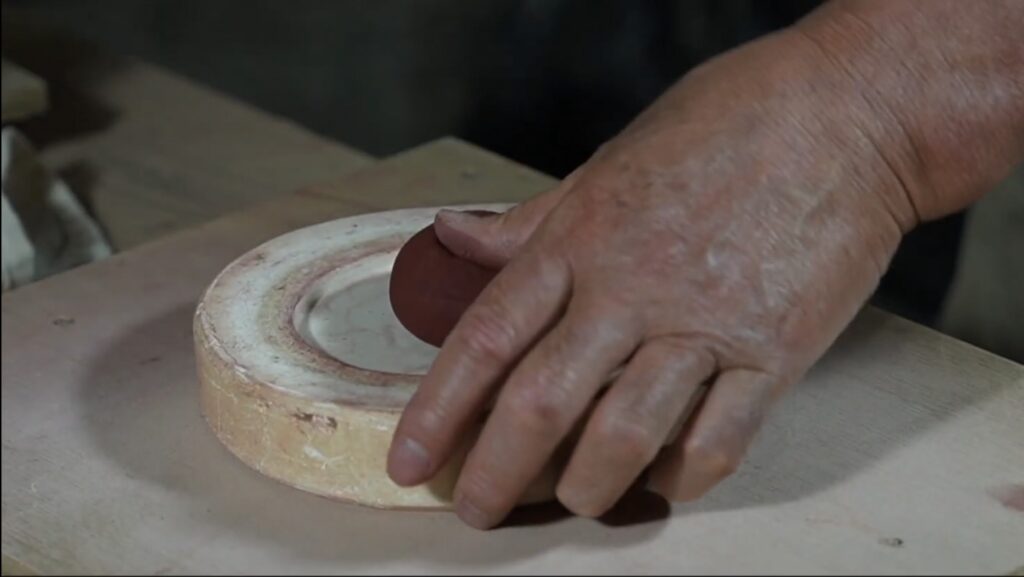
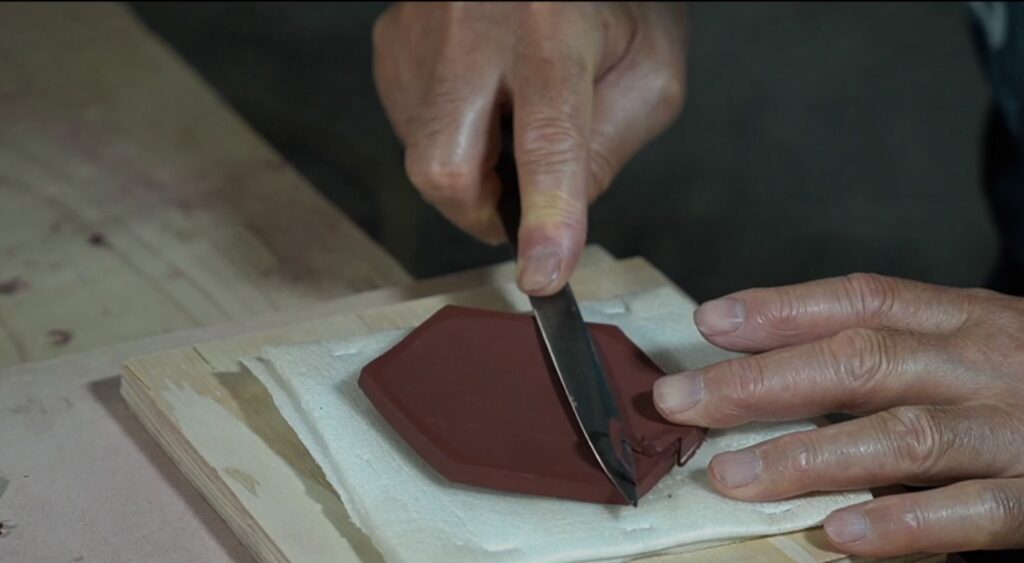
Final process
After hardening the tile moderately, we finish the surface with a spatula. Remove unnecessary parts and make it shiny.
You can watch the production process of Kyoto tile on YouTube!
Up to 700 Types of Kyoto tile
Many people are impressed by the delicate ornamentations and beauty of tiled roofs when they see the traditional Japanese landscapes such as temples, shrines, and historic buildings.
Tiles were introduced to Japan at the end of the 6th century and the demand from temple gradually increased. After this, the establishment of the capital in the Heian period (794-1185) triggered the flourishing of the Kyoto tile industry in Kyoto. The typical type of Kyoto tile used in building roofs were Ji-Gawara / 地瓦 but today, eaves and onigawara / 鬼瓦 (Also known as Yakumono / ヤクモノ) are used in many places.
One of the main characteristics of Kyoto tile is the number of its types. Kyoto tile can be categorized into 700 different types, and their wide variety of designs allow them to be used in various places – from temples and shrines to townhouses. These 700 different types of Kyoto tile continue to support traditional Japanese architecture and are accepted in private homes today.

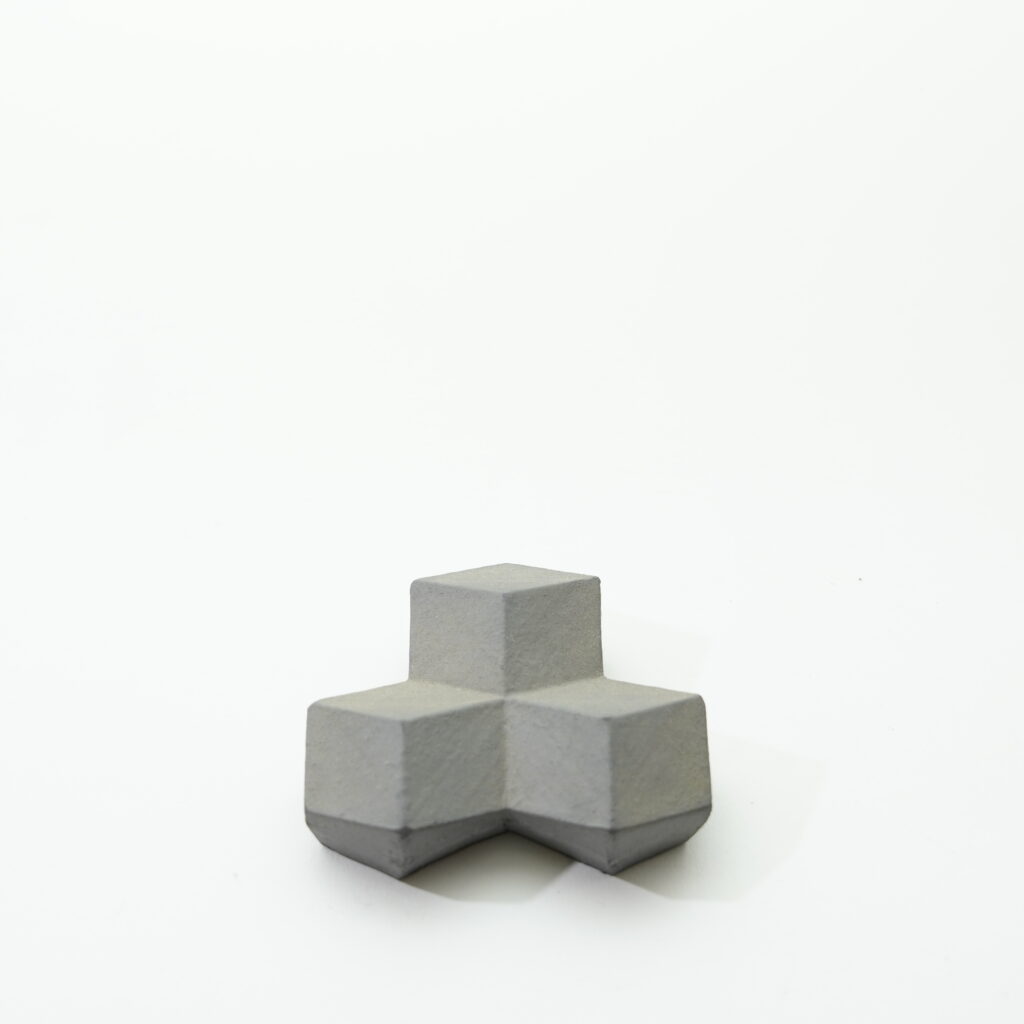
History of Kyoto Tile
Since the introduction of Kyoto tile to Japan during the Asuka period (710-794), kawara tiles (kawara is general term of Japanese tiles – Kyoto tile refers to the kawara made in Kyoto) were very valuable and were long used in traditional buildings such as temples, castles and so on. During that period, Kyoto tile was made of clay from Kyoto and polished them before firing the raw materials in order to give it a luster color, which is different from other tiles. In the late Edo period (1603-1868), Kyoto tile began to be used as a roofing material for private homes. One of the main reasons for the spread of Kyoto tile to private homes was the recommendation of the 8th shogun, Tokugawa Yoshimune. He introduced the tiles as a fire prevention measure to stop the spread of damage caused by fires to those houses. Tiles with a history of more than 1,200 years are produced throughout Japan. However, Kyoto tile, which are stately and delicate, have been regarded as a luxury item in terms of its quality and elegant appearance.
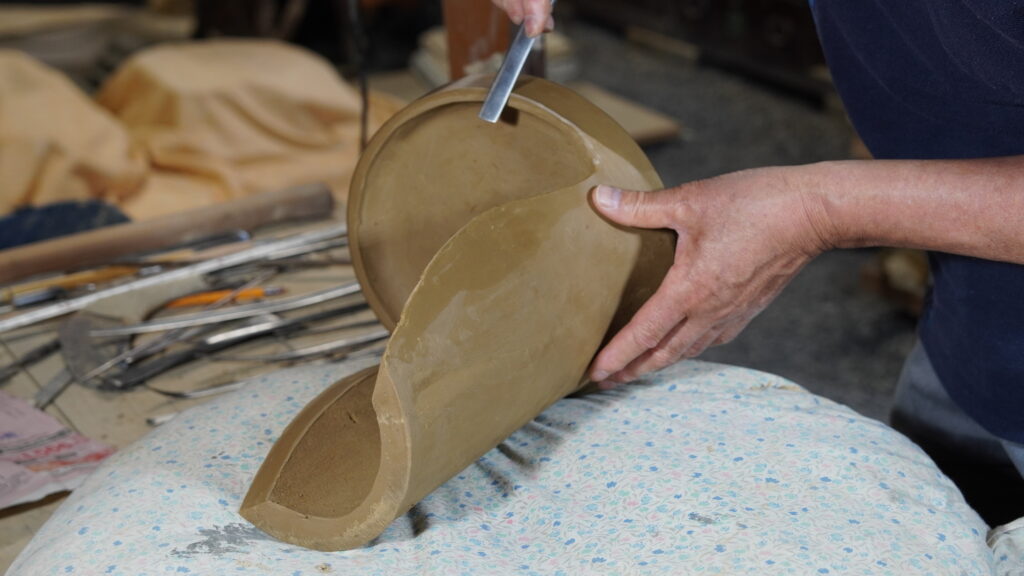
Problems faced by Kyoto Tile
As this article explained above, in the past, Kyoto tile was made from clay found in Kyoto, and the tiles made by the specific techniques handed down in Kyoto are called Kyoto tile. Today, however, even though the clay can be found in Kyoto, they are buried under houses due to the rapid urban development. However, there are so many craftsmen who would like to have all of their clay and use the traditional skills in Kyoto, as long as they call the product Kyo-kawara. In order to solve the problem of lacking in the resources, the research is continuing to create new tiles by making the waste Kyo-kawara tiles powered and mixing it as raw material. Current research shows that depending on the amount of powdered tiles mixed in, the hardness of the new tiles can be higher than the normal one.
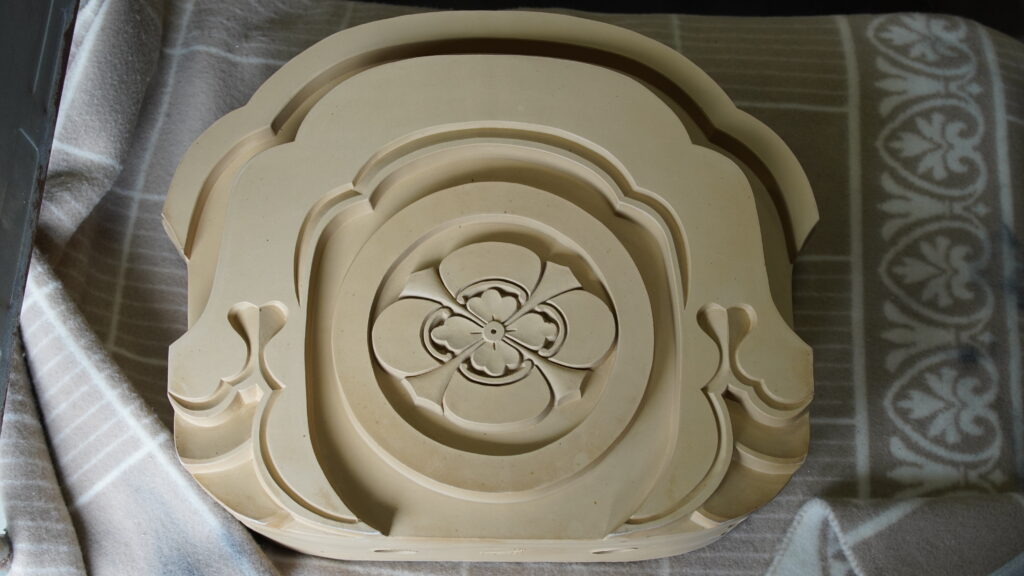
When you visit shrines or temples and see Kyo-kawara tiles, you may find them even more attractive if you pay attention to the “polishing technique” that has been handed down from ancient times in Kyoto.
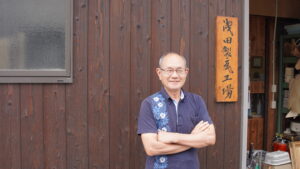
Suigenkyo Online Store
We offer a wide range of products including tableware, accessories, and interior design.
Suigenkyo YouTube
You can see the making process of the products listed on Suigenkyo Online Store.
